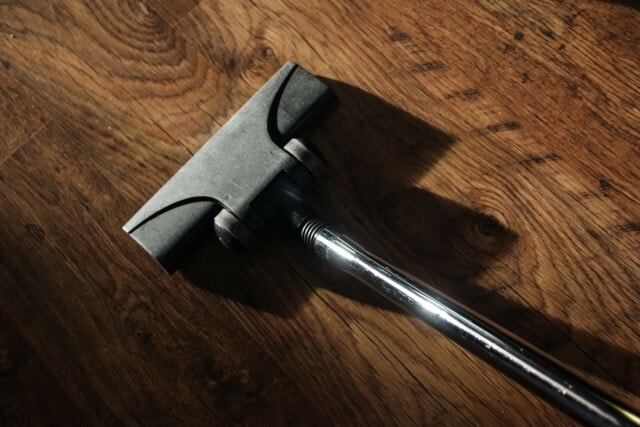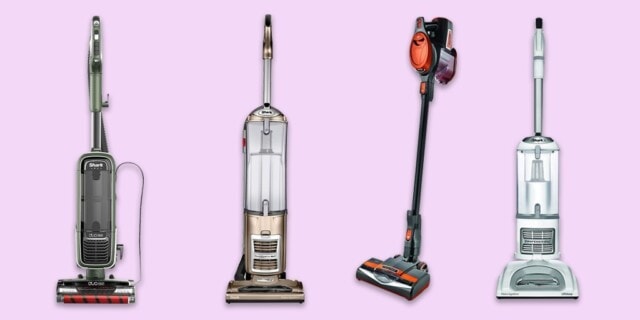Best Shop Vacuum Cleaners
| | ||
|---|---|---|
| Corded | Battery | Corded | 10ft | |
| Filter | Cloth | |
| Weight | 7 lbs | |
| Hose | 6ft | |
| Horsepower | 2HP | |
| Capacity | 2.5 Gallons | |
| | ||
|---|---|---|
| Corded | Battery | Corded | 10ft | |
| Filter | Fine Dust Cartridge | |
| Weight | 13.4 lbs | |
| Hose | 6ft | |
| Horsepower | 4HP | |
| Capacity | 6 Gallons | |
| | ||
|---|---|---|
| Corded | Battery | Corded | 12ft | |
| Filter | Cartridge | |
| Weight | 19 lbs | |
| Hose | 7ft | |
| Horsepower | 6HP | |
| Capacity | 8 Gallons | |
| | ||
|---|---|---|
| Corded | Battery | Corded | 20ft | |
| Filter | Fine Dust Filter | |
| Weight | 25 lbs | |
| Hose | 7ft | |
| Horsepower | 6HP | |
| Capacity | 14 Gallons | |
Overview
Upright and canister vacuums are great for cleaning indoor messes and hair, but what happens when you need to deal with liquid messes? Wet/dry vacuum cleaners, also referred to colloquially as “shop vacs,” have been the preferred option for many when it is time to clean up bigger messes or when a tool shed or garage needs a sweep.
The most effective wet/dry vacuum cleaners are often the most powerful. These vacuums use interchangeable and removable filters to pick up anything from sawdust and sand to splintered wood particles, stagnant water, and anything in between.
Wet/dry vacuums walk the line between cleaners and tools and need a certain set of features to be best for use in any garage or household. We’ve assembled our top four picks for some of the best shop vacs and wet/dry vacuum cleaners in the market. These four products range in size and power and each can be a perfect solution to any wet or dry mess you need to pick up.
In this article we’ll walk through the important aspects to consider when buying a shop vacuum cleaner, including differences in terminology and the importance of filtration. Then, we’ll profile some of the best models available in the market today to get you on your way to a cleaner space no matter how difficult the mess is.
HowToHome Pick
![]()
10ft cord | Cloth Filtration | 7 lbs | ✓ 6ft Hose | ✓ 2HP | ✓ 2.5 Gallon Capacity
This Wet/Dry vacuum from Armor All proves that big things can come in small packages. Lightweight and versatile, this wet/dry vacuum is perfect for cleaning cars, small crevices, and maybe even apartments. For bigger spills and small dust, however, you might want to seek out something with a bit more heft to it.
Pros
- Lightweight
- Affordable
- Diverse attachments
Cons
- May struggle with bigger spills
- Weak filter
- Short cord
Features
- Auto-shut off
- Deluxe Car Nozzle
- Attachments: 2-in-1 utility nozzle, crevice tool, blower nozzle, detail brush
- Warranty: 2-year Limited
Wet/dry vacuums aren’t especially known for their portability, but Armor All’s small-yet-powerful utility vacuum manages to pack all of the features you know and love into a product that’s perfect for cars and delicate jobs.
Armor All Utility vacuum utilizes a 2 horsepower motor, which may not seem like much, until you consider the entire package is well under ten pounds. Included with this utility wet/dry vacuum is a six-foot hose, cloth and foam filter, and a 2.5-gallon tank to hold all of the debris you pick up. And with these attachments, that may be quite a lot.
Even compared to the larger shop vacuums on our list, this Armor All vacuum has a ridiculous amount of attachments. You get the usual crevice tool and a detail brush, alongside two nozzles that are specially made for what this vacuum does best: car cleaning. While it’s still more than capable of picking up wet spills, it is the crevice tools and small size that make this product affordable and powerful.
However, Armor All doesn’t have a patent on attachments, and it will not be difficult for other shop vacs to do the same job with a more powerful motor and larger canister. This product is affordable, but other shop vacuums with more features are close enough in price to question this vacuum’s value.
Public perception of the utility vacuum is quite high, with most customers using the vacuum in their cars. The only major problem comes again from an issue of size. When using a full-sized wet/dry vacuum, you’ll need to purchase a bag and use a strong filter to pick up those smaller pieces of dirt and debris. While the Armor All Utility AA255 comes with effective filtration, it’s not quite up to snuff when compared to the others.
Overall, this wet/dry vacuum is for cars and smaller homes only. If you’re already going for a larger wet/dry vacuum for big spills, a few extra attachments might be better than pick up a product of this size. For apartment dwellers and car owners who just want an affordable product for their vehicles, this product is more than up to the task.
10ft cord | Fine Dust Cartridge Filtration | 13.4 lbs | ✓ 6ft Hose | ✓ 4HP | ✓ 6 Gallon Capacity
Stanley SL18116P manages to walk the line between portability and power with considerable precision, and homeowners are going to love. A short hose and weak performance on dry debris, however, make this product better for lighter work.
Pros
- Sturdy
- Long extension wands
- Lightweight
Cons
- Short hose
- Struggles with dry debris
- No drain port
Features
- Fine dust cartridge filter
- Waterproof on/off switch
- Attachments: Extension wands, crevice nozzle, floor nozzle, dust bag
- Warranty: 1-year Limited
Stanley is one of the more recognized and versatile brands in home improvement and tools, and their take on the wet/dry vacuum is designed for harder use.
Unlike the Armor All utility vacuum, Stanley SL18116P can be ordered in many shapes, sizes, and power levels. Their flagship model uses a 6-gallon tank and a 4 horsepower motor, making it more suited for bigger jobs, but it is also relatively quiet when compared to the bigger vacuums.
The thinner and taller build on the canister is offset by wide swiveling wheels that make this vacuum sturdy and difficult to tip over. It is also relatively lightweight when compared to similar models, and the included fine dust cartridge filter saves many from having to seek one out.
Unfortunately, while the cartridge filter is more than effective, the vacuum’s ability to pick up small particles in the first place is questionable. Public perception is fairly good, but a lack of suction power seems to come up more than once. For a vacuum category that is heavily reliant on horsepower and raw suction power, that can be a big detriment to man.
Still, the included bag can pick up lots of medium and large-sized debris, and the vacuum is relatively waterproof as well.Which is a good thing too, as you’ll have to manually dump out the canister after sucking up water, instead of relying on a drain port.
Generally speaking, the Stanley SL18116P is a middle-of-the-road vacuum with middle-of-the-road features. The price is right, and the ability to use hoses and change out filters makes this just about as versatile as the higher end models. If you want more than a car cleaner but less then a professional-grade monstrosity of a vacuum, this Stanley product is ideal.
12 ft | Cartridge Filtration | 19 lbs | ✓ 7ft Hose | ✓ 6HP | ✓ 8 Gallon Capacity
The Shop-Vac and wet/dry vacuum cleaners are so synonymous at this point, most people think that they’re the same thing. This 8 gallon version boasts all of the features you want, but might be lacking a bit of terms in attachment quality and stability.
Pros
- Stainless steel build
- Assembled in USA
- Powerful motor
Cons
- Plastic/weak attachments
- Unstable
- Narrow hose
Features
- Tank drain
- Dolly
- Attachments: Extension wants, crevice tool, gulper nozzle, floor nozzle
- Warranty: 3-year Limited
For many, shop vacuums, wet/dry vacuums, and the Shop-Vac brand are generally considered the same thing. After so many years of excellence, it’s hard to blame them.
Shop-Vac has been making vacuum cleaners and making a name for themselves for the past 50 years. We’ll get into the nomenclature a little bit later on, but Shop-Vac has claimed so much of a hold on the wet/dry vacuum market, they’re essentially the same.
Their 8 gallon 5989400 model is their newest in a long line of 8 gallon wet/dry vacuums. The stainless steel build, in particular, makes a commanding presence and promises to last much longer than the plastic builds in some of their competitors.
The 6 horsepower motor makes quick work of small, medium, or large debris. Using the included filters and bag, you can quickly and easily pick up a mess in your car, on the toolshed floor, or in the basement. That power isn’t lost on wet spills as well, and a tank drain makes cleanup a lot less labor intensive.
For a unit that’s built as well as it is, however, the included attachments are surprisingly weak. The gulper nozzle and crevice tool do an adequate job, but the multi-use floor nozzle doesn’t feel as sturdy as it should for a vacuum cleaner in this price range. Likewise, this model is built short and stout, but it tends to tip over and frustrate homeowners trying to get the most out of the 6-foot narrow nozzle. You may need to stop and clear out this hose every once in a while.
Problems aside, a 3-year warranty from a brand as trusted as Shop-Vac is more important than you would expect. The raw power is there, and if you get creative with your own attachments, you can expect to pick up any kind of mess for years to come.
Budget Pick
![]()
20ft cord | Fine Dust Filtration | 25 lbs | ✓ 7ft Hose | ✓ 6HP | ✓ 14 Gallon Capacity
Ridgid’s massive 14 gallon, 6 horsepower wet/dry vacuum is the most powerful vacuum on our list with the price tag to prove it. Provided you can stand the noise, this vacuum can pick up small dirt, sawdust, water, and just about anything else you can throw at it.
Pros
- Powerful
- Long cord & hose
- Large capacity
Cons
- Bulky
- Expensive
- Weak attachments
Features
- Noise-reduction technology
- Fine-dust filter
- Attachments: Extension wands, utility nozzle, car nozzle, wet nozzle
- Warranty: Full Lifetime
Ridgid is known for a product line designed to directly compete with Shop-Vac, and their WD1450 wet/dry vacuum might be their most powerful yet. Matching the Shop-Vac’s 6 horsepower motor and nearly doubling its capacity, this wet/dry vacuum can clean several rooms without ever needing to be emptied. Using either the 2 included extension wands, one of the three nozzles, or simply the 7-foot hose, this Ridgid product will have no problems gulping down just about anything that dares get in its way.
That level of power requires a few sacrifices, so if you’re aiming for power and size over everything, consider the following before purchasing your vacuum: At 25 pounds and over 2 feet in height, this product isn’t designed to squeeze through tight spaces or be carried in a pinch. This won’t be much of a problem for single-room spaces or ranch homes, but it is going to take great effort lifting this behemoth up a flight of stairs.
Likewise, the attachment list is surprisingly sparse, and the plastic build of the canister is a bit questionable considering this products price tag. While Ridgid offers a generous Full Lifetime Warranty against defects and other manufacturer-blamed issues, people can easily overestimate the integrity of the plastic build and suck up far more than the machine can handle.
Still, public perception on the Ridgid WD1450 is sky high, with most claiming that more powerful wet/dry vacuums possibly don’t even exist. The only major complaint from reviewers, despite the included noise-reduction technology, is the sheer volume of the product. As it turns out, 6 horsepower motors aren’t all that quiet. Cleaning cars and transporting this wet/dry vacuum is going to be a hassle, but with the right location and a good set of ear plugs, any dirt in the immediate area will surrender to the Ridgid WD1450.
Buyer’s Guide
Wet/dry vacuums are designed to be both durable and versatile, making them quite distinct from their canister and upright cousins. It is also worth noting that there is a clear distinction between a Shop-Vac, a shop vacuum, and a wet/dry vacuum.
A wet/dry vacuum consists of any vacuum that can pick up water and dry debris, while shop vacuums are wet/dry vacuums commonly designed for hard use and in workshops, such as the ones listed here. These are called shop vacuums in reference to the Shop-Vac company, which has such a grip on the wet/dry vacuum market that most people assume all wet/dry vacuums are Shop-Vacs.
Vacuums that are wet/dry vacuums but aren’t in the style popularized by the Shop-Vac company are called multi-surface vacuums, which come with their individual strengths and weaknesses.
Bags, Filters, & Sleeves
As a wet/dry vacuum, these products can pick up essentially anything small enough to fit into the hose. However, the machines need to be retrofitted with the right bags, filter, and sleeves before attempting to do so.
For dry only debris, there are two options you can utilize. On the interior of the machine and within the canister, you should find a general foam filter and a secondary fine dust filter. This second filter is usually a corrugated cylinder that wraps around the part of the top motor that expands into the canister. Running the vacuum in this setup will be perfect for larger debris.
For dirt and fine debris, it is best to use a bag alongside both filters to ensure none of the dirt is being spread back into the environment through the exhaust vent. Bags for wet/dry vacuums are generally defined for a specific machine only, so be sure to check in with your manual to make sure you’re picking up the right bags for your machine.
For wet debris or wet and dry debris, you’ll want to remove any bags and filters except for the foam filter. This will allow you to pick up heavy debris, stagnant water, or begin to clean up after water damage. This also works best with a wet foam sleeve, that can be placed in the same central location as the fine dust filter.
Keep in mind that the Armor All Utility wet/dry vacuum utilizes a single cloth for filtration, so using a bag with this specific wet/dry vacuum won’t be possible.
Horsepower & Capacity
Wet/dry vacuums almost never have brush rolls or other carpet-specific cleaning products, so their versatility is limited to hardwood, vinyl, concrete, and outdoor use. These vacuums are also all designed in a similar fashion, so the big difference between models comes in the horsepower and capacity of the machine.
Horsepower is directly responsible for the suction power of the vacuum, so you’ll generally find a more powerful motor in a vacuum with stronger suction. The length and diameter of the hose and attachments also play an important role in suction power, so utilize thinner attachments for a slightly stronger pull. Capacity is also important when shopping for a wet/dry vacuum that’s destined for big messes or water damage. Having to constantly empty a smaller canister is always a hassle, so be sure to consider your home size and try to figure out which capacity best matches your needs.
Accessories & Drainage
Finally, the universal nature of these wet/dry vacuums means that smaller features like accessories or the presence of a drainage hole can be huge.
Accessories allow homeowners to reach further and pick up dirt in harder to reach places, while the drainage hole can allow you to drain the water from your wet/dry vacuum without having to lift it up or tip it over. Nothing can be more frustrating than lifting a 14-gallon canister with dirty water, so a drainage hole or cap is a big plus.
Generally, smaller homes and more precise jobs are going to want the better accessories, while bigger homes and locations that primarily need water removed are going to rely on bigger canisters and drainage holes.
Final Thoughts
More than perhaps any other vacuum type, wet/dry vacuums and shop vacuums are dependent on capacity and power as selling points. Those with smaller homes or simply want a device that’s effective at cleaning cars should stick with either the Armor All Utility wet/dry vacuum, or perhaps the Stanley wet/dry vacuum. Those looking for powerful machines that can hold their own against the messiest of basements and workshops should consider either the Shop-Vac 5989400 for its durable build quality or the Ridgid WD1450 for raw size and power.
Otherwise, be sure to consult our breakdown of strengths and weaknesses of each vacuum, and consider the cost of extra attachments, bags, and filters before making your choice. Not every home will require the focused strength of a wet/dry vacuum, but for anyone who’s had to face a water leak or messy tool shed head-on, you’ll know why a good shop vacuum is completely irreplaceable.





